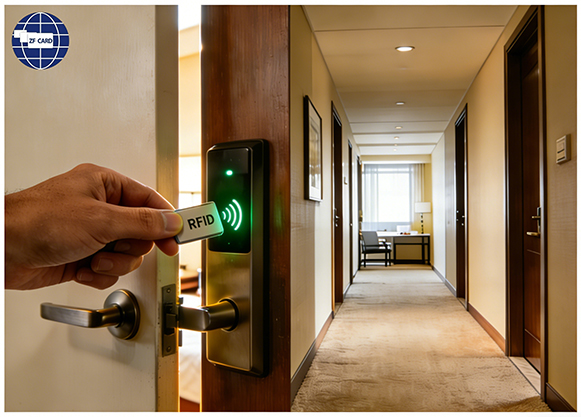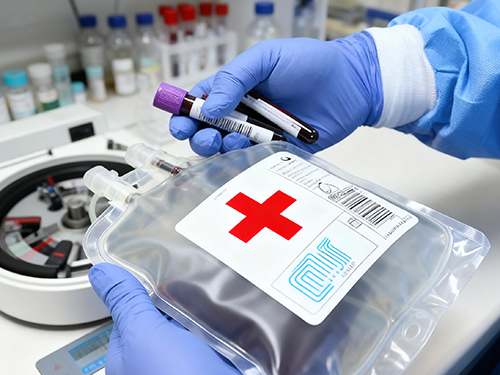Hot News
-
 Special-Shaped VIP Cards for Amusement Parks: Integrated Application of Creative Design and Smart Technology Dec 12,2025
Special-Shaped VIP Cards for Amusement Parks: Integrated Application of Creative Design and Smart Technology Dec 12,2025 -
 "Good Enough" VS "Built to Last": What' s the Difference Between Cheap and Premium Smart Cards? Dec 11,2025
"Good Enough" VS "Built to Last": What' s the Difference Between Cheap and Premium Smart Cards? Dec 11,2025 -
 Enhance the hotel customer experience with radio frequency identification tags Dec 08,2025
Enhance the hotel customer experience with radio frequency identification tags Dec 08,2025 -
 Redefining Contactless Business Interactions Dec 03,2025
Redefining Contactless Business Interactions Dec 03,2025
RFID tags make blood bag management smarter
In the warehouses of hospital blood transfusion departments or blood banks, hundreds or thousands of bags of blood products are neatly arranged. However, the most troublesome issue for staff is inventory management—manual counting is time-consuming and labor-intensive, labels are easily damaged and hard to identify, and matching blood types cannot be found in emergency situations... The traditional method is like "a blind person touching an elephant," inefficient and prone to errors. And now, RFID (Radio Frequency Identification) tags are quietly changing this situation! It's like equipping each blood bag with a "smart ID card," enabling inventory management to move from the "manual era" to the "intelligent control era." Today, let's talk about how this small tag has become the "efficiency champion" in blood bag management!
1. What are the difficulties in traditional blood bag management?
The core difficulties in blood bag management are threefold:
· Slow information reading: Traditional barcodes require scanning bag by bag. When blood bags are stacked or labels are smudged, the machine cannot read them at all;
· Delayed inventory updates: Manual registration is used for storage and retrieval, which can easily lead to missed or incorrect data records. In critical moments, there may be a "discrepancy between accounts and actual items";
· Difficult traceability: Key data such as donor information, blood collection time, and test results are scattered, making it difficult to quickly match the most suitable blood bag in emergency blood use.
Especially in first-aid scenarios, every minute can be a matter of life and death – the traditional management method obviously cannot "keep up with" the demand!
2. How can RFID tags "break the deadlock"? Three major advantages directly address the pain points
An RFID tag is an electronic tag with a built-in chip, which can read information contactlessly through radio waves (unlike scanning codes, there's no need to align with light). When used in blood bag management, its advantages are too obvious:
· Batch reading, making inventory efficiency increase by 10 times
Traditional barcode scanning requires scanning one bag at a time, while an RFID reader can read multiple tags simultaneously (within a maximum distance of 1-2 meters, and it can easily scan dozens of bags at once). Workers can complete the inventory check of an entire cabinet of blood bags in just a few seconds by pushing the reader around the shelf, with the data synchronizing to the system in real-time—no more staying up late or working overtime to count blood bags!
· Non-contact identification, no fear of dirt, wetness, or occlusion
Blood bags may get stained with blood or water during transportation or storage, and may even be pressed by other blood bags. However, RFID tags do not need to be directly aligned for scanning (they can penetrate common packaging materials such as paper and plastic). Even if the tags are a bit dirty or blocked, information can be read stably. Even if the blood bags are piled up like a small mountain, the reader can "penetrate" to find the target.
· Data is bound throughout the entire process, with precise tracking down to the second.
Each RFID tag stores the unique ID of the blood bag, which is linked to data such as blood type, blood collection time, test results, expiration date, and donor information (and can even be associated with hospital blood usage records). From storage to delivery and then to transfusion, the information is automatically updated throughout the entire process, and the system monitors the inventory status in real-time — which bag is about to expire? Which blood type is in short supply? It's all clearly visible on the computer, and it can even issue automatic warnings!

3. Practical Application: From "People Looking for Blood" to "Blood Waiting for People"
The blood transfusion department of a top-tier tertiary hospital once did some calculations: in the past, counting 1,000 blood bags required 2 nurses to spend 2 hours, but now it can be done in 10 minutes with an RFID reader; when the emergency department is in urgent need of type O blood, the system can screen out the blood bags with the nearest expiration date and the nearest storage location within 10 seconds, and nurses can pick up the blood according to the navigation, reducing the response time from half an hour to 5 minutes!
What's more important is that RFID tags can also be connected to hospital HIS systems and blood bank management systems, enabling the digitization of the entire "collection-storage-usage" chain. Blood banks can intelligently allocate blood according to hospital needs, and hospitals can predict inventory shortages in advance, truly achieving "no waste of blood resources and no interruption of blood supply for emergency treatment."
Conclusion: The warmth of technology lies in making saving lives faster.
An RFID tag may just be a small electronic chip, but it transforms blood bag management from "manual speculation" to "data-driven decisions", inventory checking from "physical labor" to "intelligent control", and even emergency blood use from "waiting for matching" to "proactive supply".
If you are a blood bank manager, head of a hospital's transfusion department, or a medical supply chain service provider, you might as well try Zhanfeng's RFID blood bag tagging solution – using technology to accelerate the pace of saving lives, ensuring that every bag of blood is "put to good use"!
-
 Design your card for free
Get Free Design
Design your card for free
Get Free Design -
 Free Sample Cards
Get Free Sample
Free Sample Cards
Get Free Sample -
 24 hours online service
Contact Us
24 hours online service
Contact Us-
Office Phone
+86 189-3398-5004
-
E-mail
mailto:Mary@zfcards.com
-
Office Phone

 English
English Russian
Russian French
French Spanish
Spanish Portuguese
Portuguese Italian
Italian Arabic
Arabic German
German











